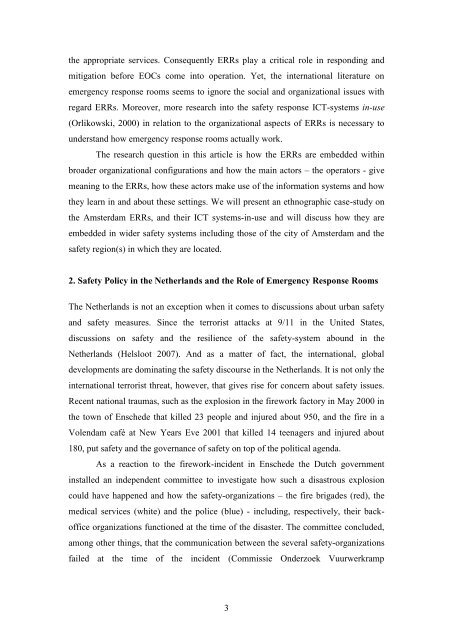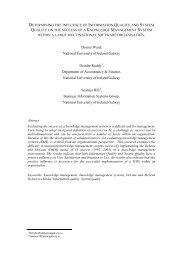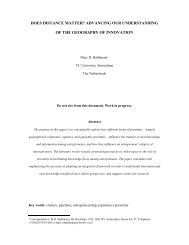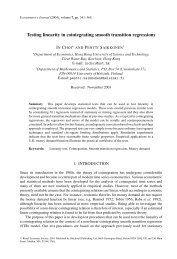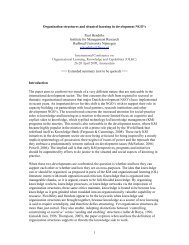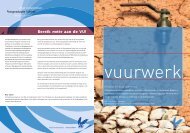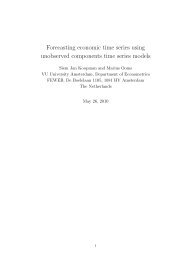Kees Boersma; Peter Groenewegen
Kees Boersma; Peter Groenewegen
Kees Boersma; Peter Groenewegen
You also want an ePaper? Increase the reach of your titles
YUMPU automatically turns print PDFs into web optimized ePapers that Google loves.
the appropriate services. Consequently ERRs play a critical role in responding and<br />
mitigation before EOCs come into operation. Yet, the international literature on<br />
emergency response rooms seems to ignore the social and organizational issues with<br />
regard ERRs. Moreover, more research into the safety response ICT-systems in-use<br />
(Orlikowski, 2000) in relation to the organizational aspects of ERRs is necessary to<br />
understand how emergency response rooms actually work.<br />
The research question in this article is how the ERRs are embedded within<br />
broader organizational configurations and how the main actors – the operators - give<br />
meaning to the ERRs, how these actors make use of the information systems and how<br />
they learn in and about these settings. We will present an ethnographic case-study on<br />
the Amsterdam ERRs, and their ICT systems-in-use and will discuss how they are<br />
embedded in wider safety systems including those of the city of Amsterdam and the<br />
safety region(s) in which they are located.<br />
2. Safety Policy in the Netherlands and the Role of Emergency Response Rooms<br />
The Netherlands is not an exception when it comes to discussions about urban safety<br />
and safety measures. Since the terrorist attacks at 9/11 in the United States,<br />
discussions on safety and the resilience of the safety-system abound in the<br />
Netherlands (Helsloot 2007). And as a matter of fact, the international, global<br />
developments are dominating the safety discourse in the Netherlands. It is not only the<br />
international terrorist threat, however, that gives rise for concern about safety issues.<br />
Recent national traumas, such as the explosion in the firework factory in May 2000 in<br />
the town of Enschede that killed 23 people and injured about 950, and the fire in a<br />
Volendam café at New Years Eve 2001 that killed 14 teenagers and injured about<br />
180, put safety and the governance of safety on top of the political agenda.<br />
As a reaction to the firework-incident in Enschede the Dutch government<br />
installed an independent committee to investigate how such a disastrous explosion<br />
could have happened and how the safety-organizations – the fire brigades (red), the<br />
medical services (white) and the police (blue) - including, respectively, their back-<br />
office organizations functioned at the time of the disaster. The committee concluded,<br />
among other things, that the communication between the several safety-organizations<br />
failed at the time of the incident (Commissie Onderzoek Vuurwerkramp<br />
3


